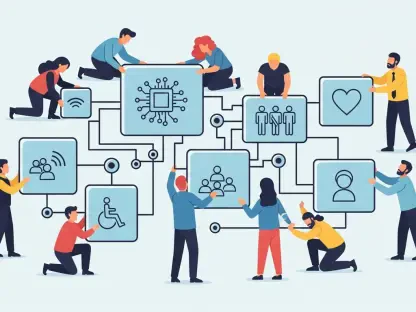AI’s continuous evolution is making it an invaluable asset for companies across industries that are it to make operations more efficient, save time, and cut costs. But where did it all begin? This article looks at AI’s origins and evolution, showcasing how this innovative technology is growing and making a difference. And are we going to be living in a simulation soon? Let’s talk about this prospect, as well as the challenges and opportunities ahead.
The Rise of AI
In order to predict where the transformative journey of machine learning (ML) is leading us, we need to take a look at it from its ancient beginnings to its present-day advancements.
Ancient Beginnings
The concept of artificial intelligence has existed for a long time. Even ancient philosophers wondered about machines’ abilities. As early as 400 BCE, mechanical devices could work independently. For example, one of Plato’s friends created a mechanical pigeon. Around 1495, Leonardo da Vinci designed a famous automaton, showing that people have always been interested in machines that can act independently.
Modern Foundations
In the early 1900s, people started thinking about making artificial brains. They began inventing simple robots that ran on steam and could do basic jobs. Important moments include Karel Čapek’s play “Rossum’s Universal Robots” in 1921 which first used the word “robot,” and the making of the first Japanese robot, Gakutensoku, by Makoto Nishimura in 1929.
The Birth of AI (1950-1956)
In the 1950s, AI became a legitimate field with all its formalities. Alan Turing’s 1950 paper “Computer Machinery and Intelligence” introduced the Turing Test. In 1955, John McCarthy coined the term “artificial intelligence” during a workshop at Dartmouth College, which laid the foundation for AI research.
AI Maturation (1957-1979)
In the late 1950s and early 1960s, significant advances were made in the field of artificial intelligence. John McCarthy invented LISP in 1958, and in 1961, the first industrial robot, Unimate, was created. However, there were also difficulties. In the 1970s, AI research encountered reduced funding due to unmet expectations and a slowdown in progress.
AI Boom (1980-1987)
The 1980s were marked by rapid growth in AI, driven by breakthroughs in research and increased funding. The creation of expert systems like XCON and the Japanese Fifth Generation Computer project were notable achievements. Despite warnings of an impending “AI Winter,” this period saw significant technological progress.
AI Winter (1987-1993)
This era was characterized by several obstacles, including reduced funding and interest in AI due to high costs and perceived low returns. The market for specialized AI hardware collapsed, and many projects faced delays or cancellations. Read more about a famous example in our article on how Intel’s dismissal of OpenAI led to its decline.
AI Agents (1993-2011)
The late 1990s and early 2000s saw a resurgence in AI, with notable achievements such as IBM’s Deep Blue defeating chess champion Garry Kasparov in 1997, and the release of the first Roomba in 2002. The era also introduced key technologies like speech recognition and natural language processing.
Artificial General Intelligence (2012-Present)
Recent years have seen the rise of AI tools like GPT-3 and DALL-E, which showcase advancements in deep learning and language processing. Innovations such as autonomous vehicles and humanoid robots like Sophia highlight AI’s growing capabilities and potential.
The Current Landscape of AI
In 2023, generative AI became known worldwide in the form of ChatGPT. In 2024, companies embraced this program, trying to improve their operations and speed up some processes. That example alone shows us how fast the AI market is growing. Furthermore, it will likely reach 407 billion USD by 2027, up from an estimated 86.9 billion USD in 2022.
McKinsey’s most recent Global Survey reveals that 65 percent of business owners have increased use of AI in their workflow. A big jump from 33 percent just ten months ago. The rise is worldwide, with more than two-thirds of respondents in almost every region using AI. The largest increase is in the professional services sector.
Businesses are using Gen AI more and more in their operations, such as marketing and sales, product and service development, and IT. This technology helps to cut costs and increase revenue—especially in areas like supply chain and inventory management.
And that’s just the start. Gen AI is set to make a big impact:
ChatGPT reached 1 million users after only five days of its launch.
According to Forbes Advisor, 64% of businesses expect autonomous programs to boost their productivity.
The field will probably grow by 37.3% annually until 2030 across many industries.
Around 25% of enterprises are using augmented intelligence algorithms to mitigate labor shortages.
Currently, 58% of Chinese companies implement this technology, and 30% are contemplating further integration. As opposed to China, only 25% of US companies rely on AI, while 43% are exploring its potential.
The Expanding Role of AI
The use of AI is expanding beyond specific business functions into more areas. Many organizations now use machine learning in at least two areas, a major escalation from last year. And, as a matter of fact, more and more people are using AI in their personal lives as well.
However, a Forbes study shows that 77% of survey respondents are worried that AI will take their jobs in the near future, indicating widespread concern about its negative impact on employment. In fact, the impact could potentially affect about 400 million workers worldwide before 2030. That is approximately 15% of the global workforce.
But it’s not all bad news. Some predictions suggest that smart technology could generate around 97 million new jobs. Hopefully, that reduces concerns about job displacement.
More optimistic respondents forecast that deep learning programs and robots will actually boost the manufacturing industry by 3.8 trillion USD by 2035, indicating significant economic growth.
Investments in generative and analytical AI are increasing, with organizations devoting a significant part of their digital budgets to integrating these technologies in the best way possible. They foresee that further investments in autonomous machine intelligence over the next three years are highly likely. Although many focus on analytical AI for cost savings and revenue generation, generative AI is also becoming popular, particularly in marketing, sales, and supply chain management.
Challenges and Risks
The rapid adoption of Gen AI is accompanied by growing recognition of its risks, particularly regarding inaccuracy and intellectual property infringement. Some are concerned AI can worsen biases if algorithms and training data are biased. To prevent this, invest in unbiased algorithms and diverse datasets and use bias detection techniques for fairness. Plus, the technology relies on personal data, raising privacy concerns. Companies should protect data by storing it securely, making it anonymous, and getting informed consent. Therefore, AI development should follow ethical rules that match human values. It is important for creators of AI to consider ethical implications, and for institutions to establish guidelines for the development and use of artificial intelligence.
While a small group of high-performing organizations leads in gen AI adoption, many consumers are worried about businesses using AI. For organizations that depend on AI, jumping over these hurdles is fundamental to their revenue. While a lot of workers are worried about businesses using AI, a study found that 65% of consumers still trust companies that use artificial intelligence programs. This shows that when smart technology is used in a responsible and transparent way, enterprises can not only maintain the trust of their customers but also use it to improve customer experiences.
Future Directions
As AI evolves, organizations adopt off-the-shelf tools, customized solutions, and proprietary models. Most use available solutions but are also exploring tailored approaches. Effective governance and risk management are essential for scaling AI responsibly, focusing on addressing data and operational challenges while implementing robust risk mitigation strategies.
In healthcare, AI is enhancing diagnostic accuracy and personalizing treatment plans, which is crucial for managing the growing patient volumes and ensuring data security. Additionally, it is speeding up drug discovery, and overcoming challenges related to real-time data processing and system integration.
Smart technology plays a pivotal role in fraud detection in the finance sector, helping prevent fraudulent activities and address latency issues that impact transactions. Furthermore, artificial intelligence models are refining trading strategies and financial transactions, with technologies like blockchain and AI/ML becoming integral to fintech advancements.
AI-driven recommendation systems are significantly improving customer experiences in the retail sector by addressing inefficiencies in manual processes and centralized data management. It also optimizes inventory management, crucial for maintaining efficient supply chain logistics during peak demand periods.
In transportation, AI is transforming road safety and traffic management with the rise of autonomous vehicles, projected to comprise 10% of the market by 2030. AI systems are also enhancing traffic flow and reducing congestion, contributing to more intelligent city infrastructure.
As AI becomes more integrated into business operations, business owners have raised concerns and developed new expectations:
A quarter of business owners are concerned AI might affect their website traffic.
97% of all business owners believe ChatGPT will benefit their businesses.
64% of business owners expect AI to improve customer relationships.
Additionally, over 60% of business owners expect AI to boost productivity.
Last, but not least, 43% of businesses are concerned about over-reliance on technology.
*Sources: Forbes
Conclusion
The fast progress and use of AI in various parts of life and business show its ability to create big changes. The fact is, you can’t be sure this article wasn’t written by a program, written by a human, run by a program, run by a human. As artificial intelligence becomes smarter, we need to monitor it, and accept its shortcomings, while also dealing with its problems in a responsible way. As AI gets better, it will be able to write engaging texts like this one, but more importantly, it will become increasingly important in shaping technology, business, and society. So no robot invasion for now. We can breathe a sigh of relief, right?









